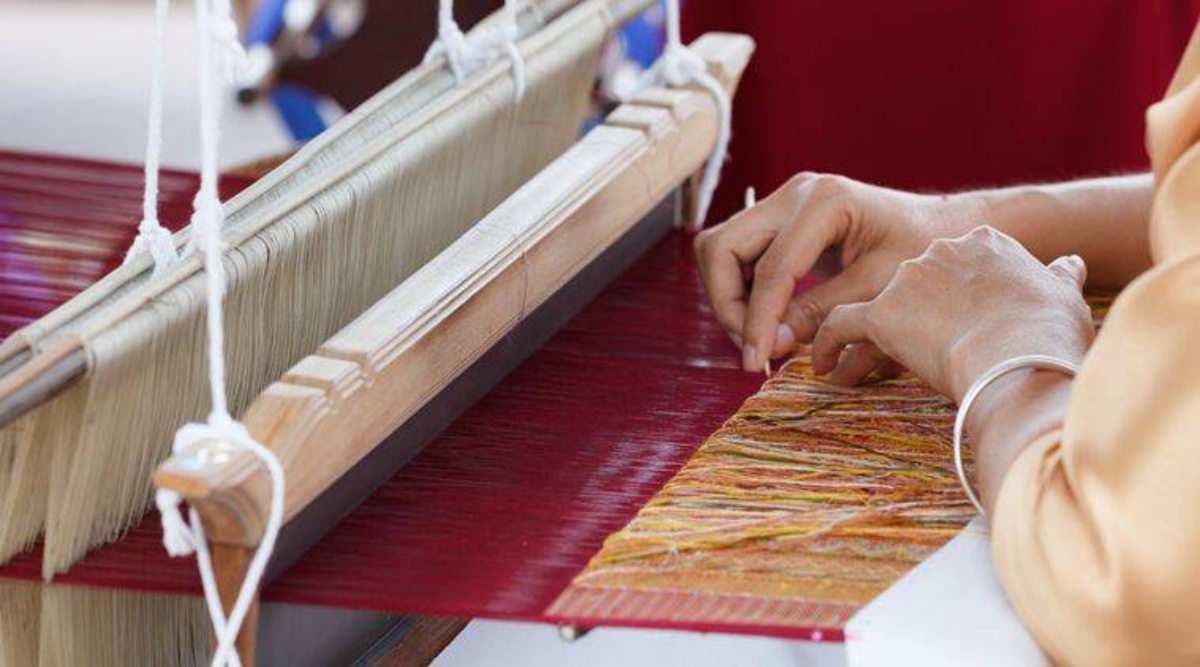Picture an ancient port, bustling with traders from across the world. Ships docked at Indus Valley’s Lothal, carrying bundles of fine cotton, handwoven with precision, and dyed in indigo extracted from the fertile lands of Gujarat. Now, fast forward a few centuries, to the royal courts of the Mughal Empire, where artisans wove brocades of gold and silver, their looms producing exquisite silks of Banaras. Move ahead in time again and we reach colonial India, where Mahatma Gandhi spun khadi on a charkha, inspiring millions to quit using British imports, promoting self-sufficiency and boosting rural communities.
On Republic Day, as we celebrate India’s sovereignty, it is worth reflecting on a legacy that has shaped our identity for millennia—our textiles.
India’s textiles are not merely fabrics—they are historical documents. The Ajrakh prints of Kutch, with their intricate patterns, reflect the influence of Sindh’s geometric designs and the Persian love for symmetry. The muslin of Dhaka, famed for its gossamer quality, once draped aristocrats from Bengal to Europe, earning it a place in the courts of Mughal and European emperors. The rich weaves of Chanderi silk, originating in Madhya Pradesh, found patronage under Rajput kings who valued their lightness and elegance in the tropical climate.
Weaves are not the only thing that make India’s textile heritage, it’s the ingenuity of artisans who mastered intensive techniques long before industrial looms became commonplace.
“A textile is now more than just fabric; it has evolved to include eco-friendly practices and modern designs. While traditional textiles still retain their significance, the contemporary definition embraces both craftsmanship and sustainability. An ‘Indian’ textile is defined by its deep connection to regional traditions, craftsmanship, and cultural heritage,” said Neelesh Ranjan, assistant professor, Alliance School of Design and Creative Arts.

 Stars like Kareena Kapoor Khan are also pushing the resurgence of traditional Indian textiles like the banarasi sari. (Source: PR Handout)
Stars like Kareena Kapoor Khan are also pushing the resurgence of traditional Indian textiles like the banarasi sari. (Source: PR Handout)
In India, the roots of textile excellence go way back
According to Saroj Bala, professor, fashion and textile department, Pearl Academy, Delhi West, India’s textile story begins in the ancient world. “The use of indigenous silk, cotton, and wool can be traced as early as the 3rd millennium BCE. Textiles were not just functional but also symbolic, with references to different fabrics and forms of dressing appearing frequently in the Rigveda,” she Bala.
The introduction of techniques like block printing, ikat dyeing, and zari embroidery during subsequent centuries further enriched India’s textile repertoire. Each region developed its own unique textile traditions, influenced by local culture, climate, and resources. For example, Chikankari embroidery flourished in Lucknow, while the intricate weaving of Banarasi silk made Varanasi synonymous with luxury.
Story continues below this ad
The global prominence of Indian textiles can be traced to ancient trade routes. Cotton from Gujarat, muslin from Bengal, and indigo dyes were highly sought after by merchants from Persia, Rome, and Southeast Asia. India was not just a producer of textiles but also a trendsetter in global fashion during ancient and medieval times.
The arrival of colonial powers, particularly the British, marked a significant decline in India’s textile dominance. The imposition of British-made goods and the systematic dismantling of indigenous industries led to the erosion of traditional crafts. However, the post-independence era saw efforts to revive these crafts, largely due to visionaries like Pupul Jayakar and initiatives like the Central Handicrafts Board.
The 20th century witnessed the resurgence of traditional textiles, thanks to festivals like the “Festival of India,” which showcased India’s rich textile heritage to global audiences. Today, traditional techniques such as Ajrakh block printing, Phulkari embroidery, and Bandhani tie-dyeing coexist with contemporary innovations, ensuring that the past continues to inspire the future.
 The Ajrakh prints of Kutch, with their intricate patterns, reflect the influence of Sindh’s geometric designs and the Persian love for symmetry (Source: Wikimedia Commons)
The Ajrakh prints of Kutch, with their intricate patterns, reflect the influence of Sindh’s geometric designs and the Persian love for symmetry (Source: Wikimedia Commons)
A modern perspective: Growth and innovation
India’s textile industry has evolved into a significant player in the global textile and apparel (T&A) market. As per the latest data from the Press Information Bureau of India, the country stands as the sixth largest exporter of T&A in the world in 2023, contributing to 3.9 per cent of the global trade. Piyush Goyal, then union minister of textile, said that India was confident of achieving textile export target of USD 100 billion by 2030.
Story continues below this ad
According to the report, exports in FY 2024 were initially low due to the geopolitical crises around the Red Sea, which affected export movement during January, February and March 2024.
The future of India’s textile industry lies in its ability to adapt to changing global dynamics. Digital technologies such as artificial intelligence and blockchain are being integrated into production and supply chain management, enhancing efficiency and transparency.
The way ahead and challenges
Sustainability and circularity have become new mantras. “The demand for sustainable textiles is growing, particularly in the realm of high-performance fabrics and smart materials,” said Bala. This shift aligns with global consumer preferences for eco-friendly products and opens new opportunities for Indian manufacturers to lead the sustainability movement.
 The future of India’s textile industry lies in its ability to adapt to changing global dynamics. (Representational file image/getty images)
The future of India’s textile industry lies in its ability to adapt to changing global dynamics. (Representational file image/getty images)
However, despite their indispensable role in preserving India’s textile heritage, artisans continue to face challenges. Many struggle with low incomes and limited market access, even as their craftsmanship forms the backbone of the industry. Government initiatives like “Make in India” and policies aimed at boosting the handicraft sector offer some support, but more is needed.
Story continues below this ad
Professor Bala notes that collaboration between artisans and modern designers has created opportunities for innovation and market relevance. However, these partnerships often remain confined to niche markets.
“Indian textiles are not just about fabrics; they are about the stories they tell, the lives they touch, and the communities they sustain,” she said.
With a focus on sustainability, innovation, and artisan welfare, India’s textile industry is poised to reclaim its position as a global leader. However, this journey requires continued investment in technology, infrastructure, and, most importantly, the people who make it all possible—the artisans.


